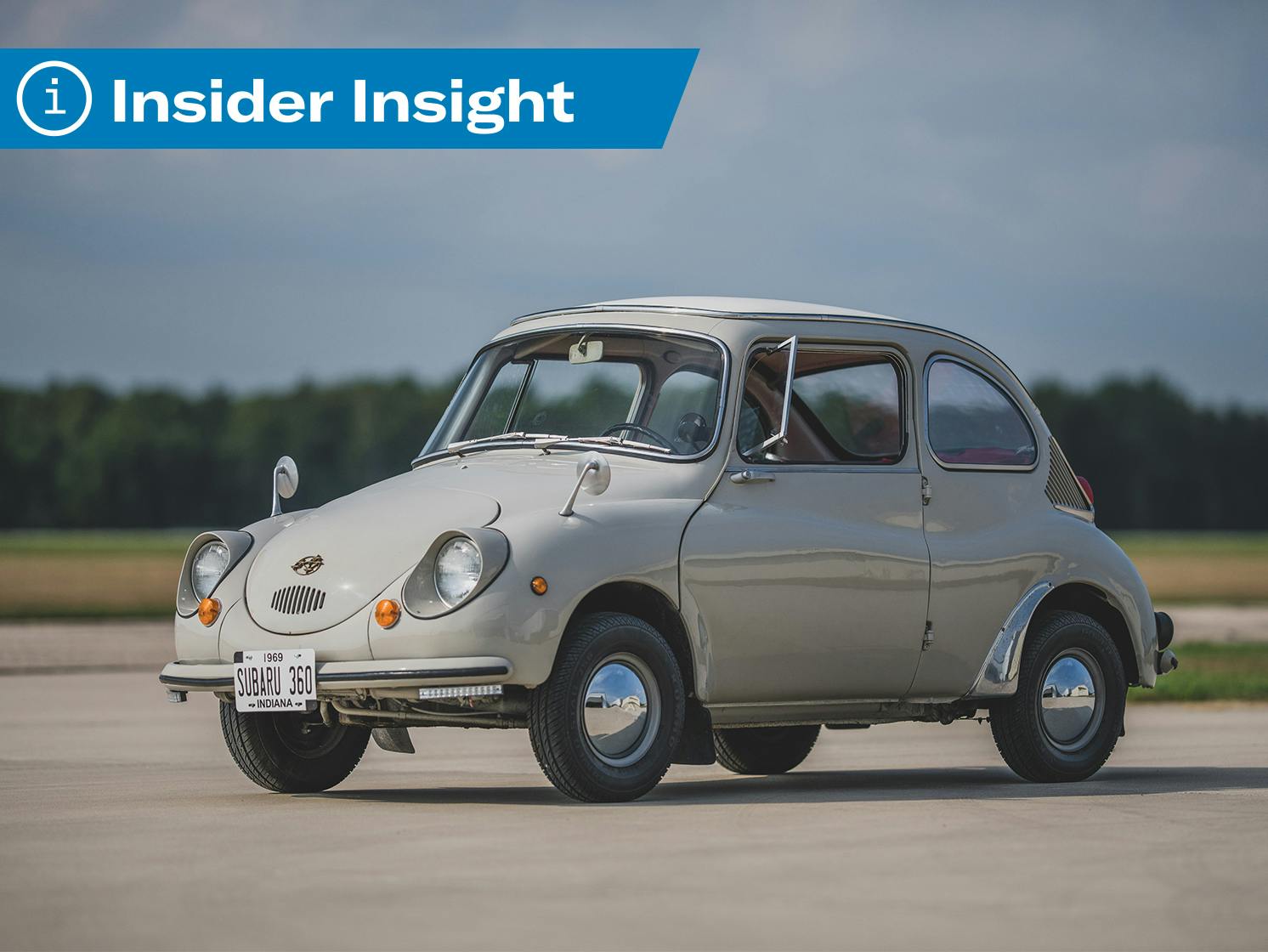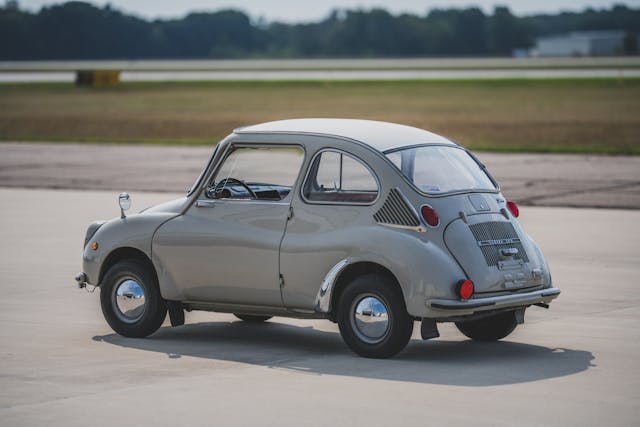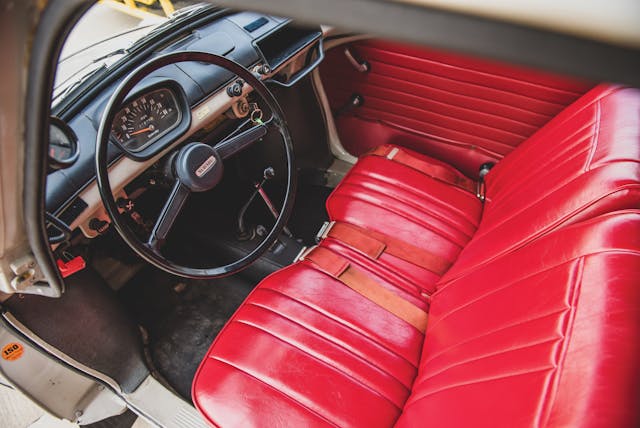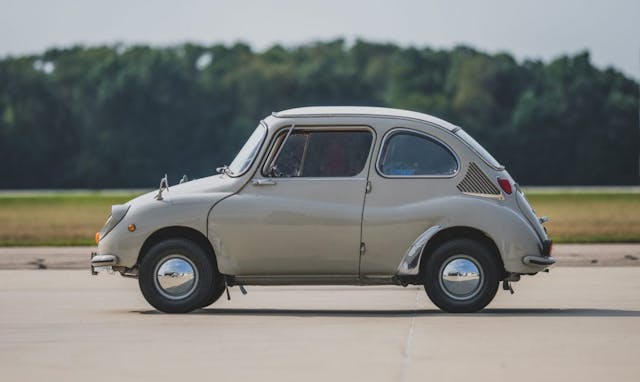Insider Insight: Can web traffic predict a price rise for a classic car?

The connection between one’s eyeballs and one’s wallet is well founded. It explains everything from the ancient advertisements that survive among the ruins of Pompeii to Google’s current market capitalization of $1.38 trillion.
However, what about something more specific: Does an increase in a car’s popularity on the internet correlate to future increases in value? And if so, can we use internet traffic today to predict which vehicles will be worth more tomorrow?
Reverse engineering a price increase
We came upon this potential link because of something we missed: The 1958–1971 Subaru 360’s astronomical value increase earlier this year. Here was a car that for years flew under the radar and then, in the matter of a few months, quadrupled in value. Was there any indication that we should have expected this? Often, prior to an increase in value, we’ll see an increase in people calling about insurance for the car and/or citing higher values for it on existing insurance policies. This is one of the many variables we use to narrow down our Bull Market picks. For the Subaru 360, however, insurance activity didn’t trigger any alarms. From 2019 to 2020, quotes increased only modestly while the average quoted value only increased 13 percent to $14,200—still less than half its current average value in our price guide. During the same period, the number of 360s for which Hagerty provided insurance policies, and the agreed values for those cars, remained flat.

Prior to quadrupling in value, the little Subie wasn’t getting much attention—or so it first appeared.
We needed to glimpse further back in the buying process, when the 360 owner was just a shopper. Before a potential buyer submits an insurance quote, they usually start researching the car on the internet. Since one of their questions is bound to be “How much will this cost me?”, we at Hagerty can capture car research activity with the Hagerty Valuation Tools website. (Important note: We looked at “organic” traffic only, meaning any traffic sent to a valuation page through a Hagerty article or video was removed.)

Sure enough, there was a major increase in HVT price lookups for the Subaru 360 about 18 months before the value quadrupled. Just a coincidence? To find out, we took a look at the rest of the vehicle generations in the Hagerty Price Guide. More than a third (36 percent) of them had a moment where traffic doubled over an eight-month period between 2018 and 2019. Sure enough, these “test group” vehicles saw an average value increase of 6.6 percent in 2020, more than double the 2.9 percent increase in value of our “control group” (i.e.: cars we track that didn’t see the big bumps in web traffic). In fact, internet traffic doesn’t need to double for the correlation to appear. As seen in the chart below, any magnitude of internet traffic increase led to an average value increase that outpaced vehicle generations without one. Note that the gap widens as the magnitude of the traffic increase gets larger.
The source of increased HVT traffic could be anything. In the case of the Subaru 360, there were a few media spots in 2018 that likely caused the bump: a Petrolicious video from March 2018, a CNN article from July 2018, an Automobile article in December 2018. We often see massive spikes in traffic for obscure cars when one is reviewed by a popular YouTuber like Doug Demuro and it’s introduced to a few million potential buyers. In reality, the source doesn’t really matter. The point is that more people are researching the car, which leads to more potential buyers, which leads to a seller’s market and increased values.
A surfboard, not a speed boat
Judging by the size of price increases, organic web traffic has a clear impact. The connection becomes far more tenuous, however, when we ask a slightly different question: How often does a spike in internet popularity result in this kind of increase? The answer is 57 percent—just slightly better than a coin toss. (It’s also about the same as we saw from the control group.) That is to say, when there is a popularity spike it clearly correlates with a rise in internet searches, but a popularity spike leads to price increases only a bit more than half the time.

It may sound odd that internet traffic could greatly impact the amount of a value increase but at the same time tell us little about whether there will be an increase at all. Zoom out, though, and it makes sense. The collector car market, like any market, is buffeted by many forces. In the period we looked at, prices could have been impacted by, among other things, a pandemic; a sudden recession resulting in massive unemployment; an infusion of government stimulus money intended to ease said recession; cancellation of many collector car events and auctions; massive growth in online car selling platforms; fluctuation in oil prices; Brexit; and general boredom among people with disposable income.

Amidst all that, whether a car appears in a particular YouTube video is just one data point. Rather than determine price trends, internet traffic seems to magnify the effect of what is already happening. Imagine a huge wave: Web traffic is a surfboard.
So, the popularity of a particular vehicle on YouTube shouldn’t in and of itself be reason to buy one. Unless, of course, watching those videos reminds you that you’ve always wanted that car and would love to see it in your driveway, values be damned. That, at the end of the day, is the whole point.
Want a deeper dive and, perhaps, more charts? Check out the full story at Hagerty Insider. For a dose of collector car analysis in your inbox every Sunday, sign up for our newsletter.

